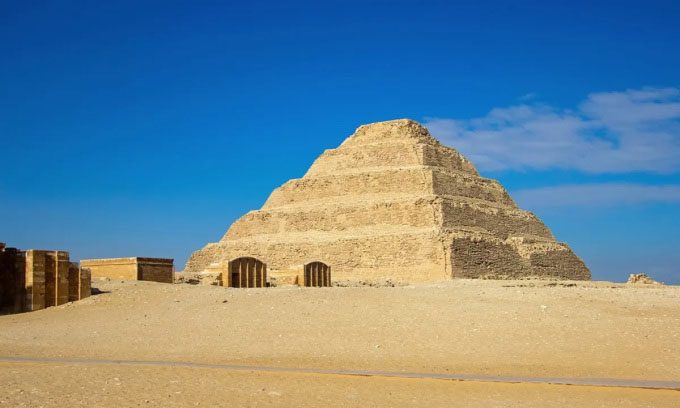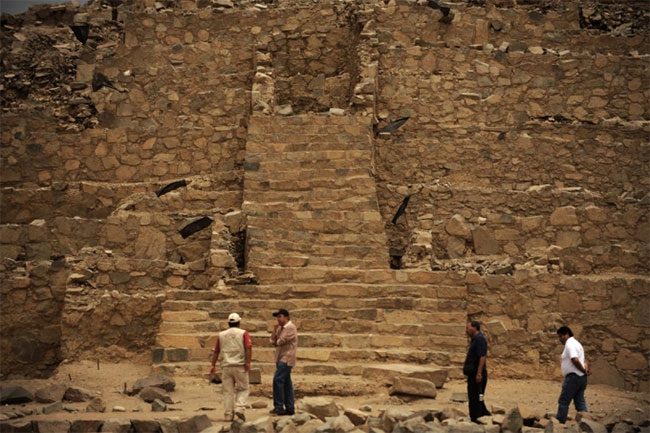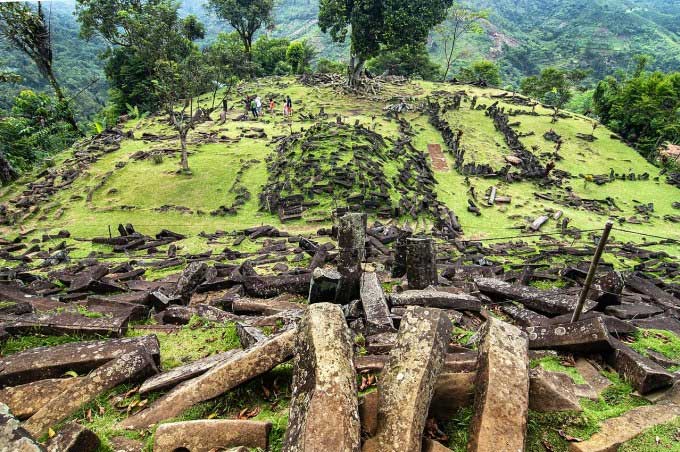Once considered the oldest pyramid in the world, the Djoser Pyramid in Egypt may soon lose its title to structures in Peru or Indonesia.
From Egypt to the Central Andes of ancient America, many great civilizations of the past shared a common interest in building pyramids. Famous tourist destinations like Giza (Egypt) and Chichen Itza (Mexico) might be the first places that come to mind when one mentions pyramids, but in reality, neither is home to the oldest pyramid in the world.
The Oldest Pyramid in Egypt

The Djoser Pyramid in Egypt. (Photo: Liya Blumesser).
Located just a few kilometers south of the famous Great Pyramid of Giza, the Djoser Pyramid is the oldest pyramid in Egypt. Situated in Saqqara, this pyramid was constructed around 2630 BC to serve as the tomb for Pharaoh Djoser.
The Great Pyramid of Giza is the largest of the three pyramids in Giza, built for Pharaoh Khufu. Djoser predates it by about 70 years and has a slightly different structure compared to the three Giza pyramids, which are triangular in shape, as it was built by stacking stone platforms on top of each other, creating a step pyramid.
The architect of this structure was the high priest Imhotep, who also served as an advisor to Pharaoh Djoser. Famous for his knowledge of art and science, Imhotep was deified after his death.
For a long time, experts regarded Djoser as the oldest pyramid in the world. However, recent discoveries on the other side of the globe have changed this perspective.
The Oldest Pyramid in Peru

The steps leading up to one of the pyramids in Caral. (Photo: Ernesto Benavides/AFP).
In ancient America, pyramids were very popular, with steep-sided temples emerging during the time of the Maya, Aztecs, and Incas. To reach the oldest pyramid in the Western Hemisphere, one must journey quite a distance from the southern jungles of Central America to the high desert region of Peru. Here, archaeologists accidentally discovered a massive and ancient city named Caral in the early 20th century.
Due to the complexity of the city, initial scientific assessments suggested that Caral was built relatively recently. However, a study published in 2001 revealed that this was not accurate. Using carbon dating to determine the age of the materials used to construct Caral, the research team found that the city could have been established as early as 2627 BC.
Based on this discovery, archaeologists speculate that the six pyramids at this site—including the massive Pirámide—could predate Saqqara in Egypt. However, as the precise dating of the buildings in Caral has yet to be established, it is challenging to determine which ancient civilization completed its pyramid first.
Gunung Padang – A Controversial Structure

The Gunung Padang structure in Indonesia. (Photo: Wikimedia).
For decades, archaeologists have attempted to determine whether the oldest pyramid in the world is located in Egypt or Peru, but another “candidate” in Indonesia threatens to claim this title. The massive megalithic site of Gunung Padang sits atop a prominent hill, and some scholars believe that this hill may have been artificially constructed by humans.
This hypothesis was first proposed in 2018, sparking considerable debate and failing to convince many scientists. However, a group of archaeologists claims to have found evidence that the hill was purposefully built by humans in multiple phases over thousands of years.
Using ground-penetrating radar, they discovered traces of a foundation built at least 9,500 years ago, possibly dating back as far as 28,000 years. If these results are verified, Gunung Padang would become the oldest pyramid in the world, far surpassing other candidates. However, at present, the majority opinion holds that it is merely a hill.





















































